#9 - The Drifters "White Christmas" (1954)
click above to hear The Drifters "White Christmas"
What they created could stand as one of the finest examples of American folk art to come out of the 20th Century. What they created in some cases also led to advances in automotive design, engineering, and construction, not only in the racing field but also for everyday drivers. But the focus of those who exploded the hobby after the war was changing the rules, going faster, and creating not only a personal statement through their creations but one whose form and function were filtered through a vision and a goal to go further, faster, and make it unique in the process.
Many of them relied on what they had learned working around engines, machines, and sheet metal, whether it came from their roles in the military, training as a mechanic, or a self-taught version of the above. They’d get together for meets, to talk shop, and to race each other. They’d buy whatever magazines and papers were available, where they’d get ideas and inspiration from whatever the other guys were doing. They’d visit local garages who might let them come in after hours to do some work, they’d collect parts and scrap metal and begin reshaping them to fit their vision, and at various times in the process they’d gather and meet and trade tips, stories, and compare notes on what worked and what didn’t pan out in their attempts.
It was competition as much as sharing knowledge. You had to know your craft before attempting to create something you had envisioned. If you weren’t good with engines, you’d find someone willing to teach you, maybe get a part-time job pumping gas or cleaning up at a garage and try to learn from the mechanics in between everything else. If you were lacking in the skills to use lead to reshape part of your car’s exterior, maybe you’d find an old-timer who would let you sit and watch as he worked, and maybe even give you the lead to try for yourself. If you went to the track and saw a driver consistently faster with his car than anyone else, you could try to ask what made it different, or if that driver held those trade secrets close to the vest, maybe you’d catch a friend of his at the right time and pry some insider info from them.
All told, it added up to what some called the “car culture” or the “hot rod culture”, the stuff songs were written about and movies featured.
How do we take something which was perfectly fine in both form and function as sold commercially, and make it our own? How do we make it go faster, make it look better, make it in the image of our creative imagination? One of the first steps after visualizing the concept was to streamline the existing design, and remove anything deemed unnecessary or strictly ornamental in the name of reducing any extra weight which would reduce speed. And removing those ornaments would also allow someone to replace them with designs of their own, everything from wheel designs to body shapes to the gear-shift knob. You would not only rework the existing car, but you would *own* the design too.
It is within a similar spirit and coincidentally in the same era that a song like “White Christmas” gets the hot rod treatment by the group The Drifters in 1954.
And hearing that record, with the context and backstory and all other external and internal factors at work, it stands to me as one of the most uniquely American records ever made, even beyond its obvious status as a Christmas favorite. And contained in the recording is one of the finest musical clarion-call moments to ever be recorded, a defining vocal and musical statement that stands alongside Louis Armstrong’s introductory trumpet call from “West End Blues”, Charlie Parker’s legendary solo break on “Night In Tunisia”, Elvis’ unaccompanied “Well since my baby left me…” on “Heartbreak Hotel”, and even Eddie Van Halen’s “Eruption” and what that meant to guitarists in 1978. Those short musical statements rewrote the rules, and announced to everyone that something new was happening, something different, and that the bar had just been set higher for the competition.
The story of “White Christmas” has been told and reported often. However, some interesting trivia and new discoveries have surfaced or do not get mentioned as often. The recording by Bing Crosby is still credited by many as the best selling single recording of all time, and the song itself factoring in all cover versions that have been released has sold over 100 million copies.
Irving Berlin at the piano
Bing Crosby singing into an RCA 44 ribbon microphone
The song was premiered on one of Bing’s radio broadcasts from December 25, 1941, just a few weeks after Pearl Harbor. A recording of that broadcast was long thought to have been lost or destroyed, however a recording someone had made from their radio did surface, and is now owned by Crosby’s estate. A short clip of that rare recording was broadcast on CBS during a Charles Osgood report on the song , December 25 2011, on “CBS This Morning”. I do not believe a full version has ever been released officially.
Poster for "Holiday Inn", 1942
The original Decca 78rpm
The power of a song like this hits home for me personally, because once I was old enough to really comprehend what I was hearing, especially after I turned eighteen, I remember every year the week before Christmas my dad would tell me about that week in 1943. In his senior year of high school, after just turning 18 that October, he got orders to report for his basic training (‘boot camp’ in the Navy) and board a train on December 23, 1943. He said there were grown men and also kids his own age around him on that train openly weeping at the thought of not being home for Christmas that year, and not knowing when the next Christmas would be that they would be home again to celebrate Christmas “just like the ones we used to know”.
Imagine that song, with those lyrics, in that context, and it becomes emotionally devastating, at the same time explaining how the song became what it did.
Recording technology becomes part of the backstory as the song continued to grow in popularity, even after the war. Recordings were done at that time “direct to disc”, which meant whatever was played in the studio would be recorded direct to a disc that was cut on a lathe in the studio. The “master” was often a metal disc, or some form of a disc where the grooves would be cut into a coating on the metal disc. Over time, and repeated plays, the disc itself would deteriorate, and the grooves would be ground down to the point where the sound quality would suffer each time it was played. Also, the discs themselves were fragile, and had to be handled very carefully to avoid scratching, cracking, or other damage.
Enter Bing Crosby, “White Christmas”, and magnetic tape. This is a part of the story which is rich in irony as well as great fodder for trivia…
Bing Crosby was one of the most popular figures in America in the 1940’s. He would do regular radio broadcasts, besides his records and film appearances. As such, he was also a very wealthy man. In the wake of Germany’s surrender in 1945, the US had all kinds of specialists and experts sent to Germany to analyze and study various technologies which the German military had been developing, sometimes reverse-engineering a machine or a device in order to learn what made it work, and copy it if necessary.
Among those was an American officer named Richard Ranger who was part of the Army’s “Signal Corps”, the group who handled communications. This officer was also an electronics and audio engineer who had seen and worked on magnetic tape recorders which had been confiscated, along with three actual tape recorders called the “Magnetophon“ which was in production in Germany during the war and had been brought to the US. This was new, and potentially revolutionary technology in the field of audio recording, as some of the magnetic tape machines were capable of things the various experimental labs in the US had not yet developed. That officer would soon have the plans and the designs, and would return to the US eventually searching for financial backing to use the designs in manufacturing high-quality recording equipment.
Bing Crosby with some of the tape recording technology he funded
One of those approached was Bing Crosby. Bing liked the idea of being able to record onto tape rather than disc, mainly so he didn’t need to travel coast-to-coast to do his regular radio shows. Rather, he would be able to record a full program onto the magnetic tape reel, and that tape not being near as fragile yet offering better fidelity than the acetate discs or transcription discs which were still the industry standard, he could stay home and simply send the tapes out as necessary. So Bing invested in the technology, that technology eventually went to companies like Rangertone and Ampex and through Ampex to pioneers like Les Paul, and modern recording (up to the digital era) was born, along with Ranger himself becoming a key figure in developing the way film could be synchronized with audio tape.Unfortunately in 1942 there was no magnetic tape in use when “White Christmas” was recorded. It was cut directly to a metal master disc. Every time a new release was ordered due to demand and popularity, that metal master would be used and each time would degrade in quality that much more.
The record was so popular, and demand only seemed to increase by each year, that by 1947 the master was deemed unusable.
What many listeners do not realize is that the “old” or “original” recording by Bing Crosby that is played endlessly on radio stations and on television is not the original. Bing actually went into the studio again in 1947 and attempted to duplicate as close as they possibly could the original 1942 master. he called the same orchestra, under the direction of John Scott Trotter, and rerecorded “White Christmas”. This is the version most hear every year, as the original 1942 recording was barely if ever reissued or heard until recently. If you listen close enough, you’ll note the intros are slightly different:
Click above to hear the original 1942 Bing Crosby recording
Click above to hear The Ravens' 1948 cover version
With that kind of universal success, the cover versions by other artists was an inevitable consequence. There were dozens of them even in the 1940’s, but one to note specifically was done by an R&B vocal combo called The Ravens. The Ravens were modeled after the styles of the Mills Brothers and the Ink Spots, and were very popular on the R&B charts as well as live performances up to the rock and roll and Doo-wop era. Their bass singer, named Ricky Ricks, was usually the featured lead which was and still is rare for a vocal harmony group, and they also had a high tenor named Maithe Marshall. Ricks and Marshall would often trade leads on verses, creating a unique contrast and part of the band’s sonic “hook”. They recorded their cover version of “White Christmas” in fall 1948, and that version charted in the top 10 on the R&B charts that year.
However, what the Drifters did with White Christmas is among the greatest musical versions of the hot-rod ethic as has ever been recorded.
The story of The Drifters is important to the history, but in light of the fact that the group in its history has had over 60 members, and is fraught with enough personnel changes, firings, legal actions, and historical confusion that I’d recommend anyone interested in their history seek out one of many volumes dedicated to the group. If the twists and turns and confusions can be summed up here, I’d mention the group was inducted into the Hall Of Fame, but had to be inducted twice to include the membership changes under which the name “The Drifters” had hit records in the 1950’s.
The early version was built around the tenor voice of Clyde McPhatter. Clyde was, simply put, one of the most influential voices in R&B and Rock and Roll. His unique style and phrasing, not to mention his high-tenor sound, was an influence on nearly everyone who sang rock and roll or doo-wop in the 50’s and beyond, perhaps more notably Elvis whose style would resemble Clyde’s and whose records like “Money Honey” he would cover. Along with Clyde, the Drifters’ bass singer was Bill Pinckney, who started in the group as a tenor but was moved to bass after a personnel shift. The other voices were Andrew and Gerhart Thrasher in the middle.
In that version of the group, they had the same formula for covering White Christmas as they had heard on The Ravens’ version from 1948. Pinckney singing bass could take the first verses, then McPhatter would take over on the next, and they’d end by quoting Jingle Bells in harmony, in free-time.
But what they created became more than a cover, more than a cover OF a cover if we take it that far. It became a unique statement, an individualized and personalized musical statement where they reworked, reshaped, streamlined, and customized an already legendary recording which was already as perfect as it could be in the 1942 Bing Crosby recording, and they streamlined it to make it their own.
In other words, they owned it on that recording.
The Ravens’ version is more a product of the Ink Spots and Mills Brothers formula, with guitar backing and harmonies which are jazzy without being pure jazz. The Ravens’ singers do expand the melody, adding notes above and below Berlin’s original phrases, but even then those singers remain relatively close to the key of the song. The groove is more jazz, not much of a backbeat, in fact it does sometimes break the rhythm entirely to accommodate a vocal phrase or two.
Compare that to the Drifters‘ record. Scrapping the celeste and chime-y instrumental intro, they start right on Pinckney’s descending wordless bass to kick it off. Subtle organ, piano. guitar, bass, and brushes set the rhythm section groove as the middle voices anchor the harmony. Pinckney’s bass melody stays closer to Bing Crosby’s original than the Ravens, and comes nowhere close to the down and up bass vocal gymnastics which the Ravens were known for. He plays it relatively straight, adding just enough variation and new inflections to make people notice.
Then Clyde McPhatter steps up to the microphone.
The way he phrases, the notes he chooses, the way he breathes and ends those phrases…it’s a tour-de-force of vocal technique, control, and all the elements of rhythm and attitude which made the best R&B music timeless and so influential.
It needs to be heard.
All I can point out apart from what everyone can hear on that record is his second verse. He has just seemingly exploded his voice in volume and intensity on the word “snow”, ending the last phrase with a flurry of vibrato and near-screaming volume that threatens to send the track into distortion. You think the song is at it’s peak, and he’ll stay in “shout voice” on the next phrase…
But instead, he delivers one of the finest vocal phrases in popular music history, in an understated yet fully in-control way, as he glides down the reworked melody, repeating rather than sustaining the word “I”, and revising it to include a pitch bend which he didn’t even do on the first verse. “I” becomes “ah-yiii-yi-yi”, and it’s as glorious a reworking of a melody as you’ll hear. Put into the context of 1954, of the near-reverence and popularity of the original Bing Crosby record, of the whole thing whatever that may be…it’s a singer showing his technique, showing his skills and his authority, and understating it for even greater effect.
It’s simply a perfect part on a terrific cover of an already-perfect song and recording that is the most popular song in history, according to some.
Yet they found a unique way to personalize it, in other words, “hot rod” the existing vehicle.
And if you listen close, really close, to that Clyde McPhatter second-verse vocal phrase on the simple word “I”, it sounds like he’s smiling so much he can’t help but let out a bit of a laugh as he ends his phrase on “dreaming“.
Maybe he knew he had just sung a line that people would be talking about and copying 60 years later.
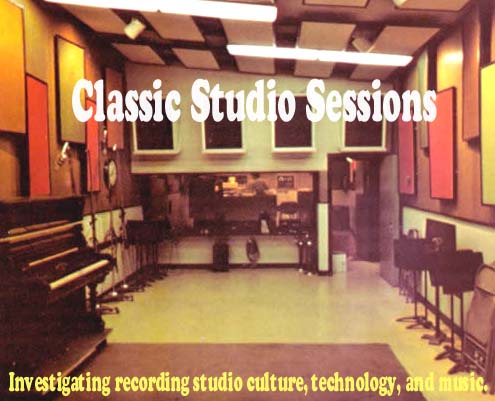
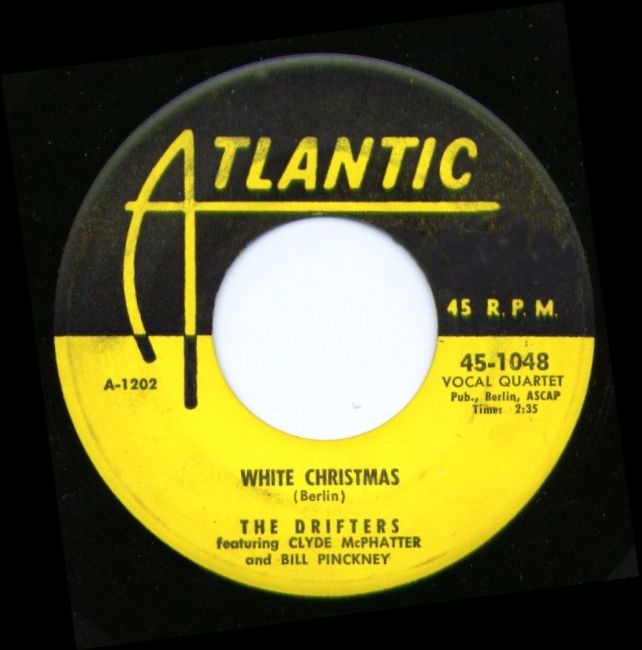

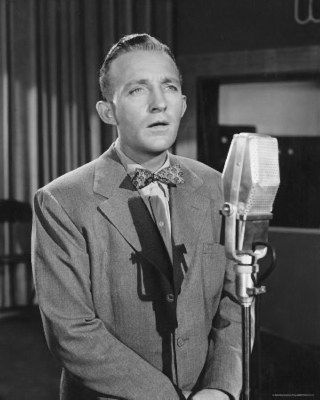
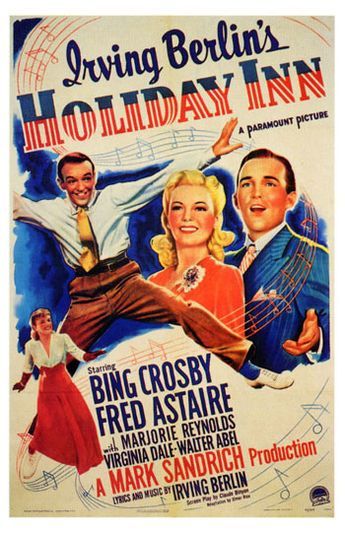


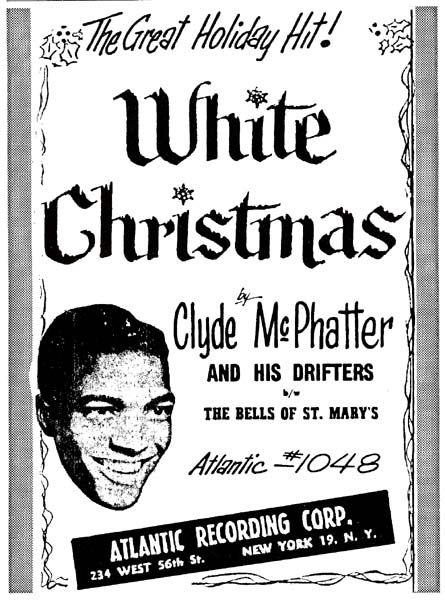
No comments:
Post a Comment